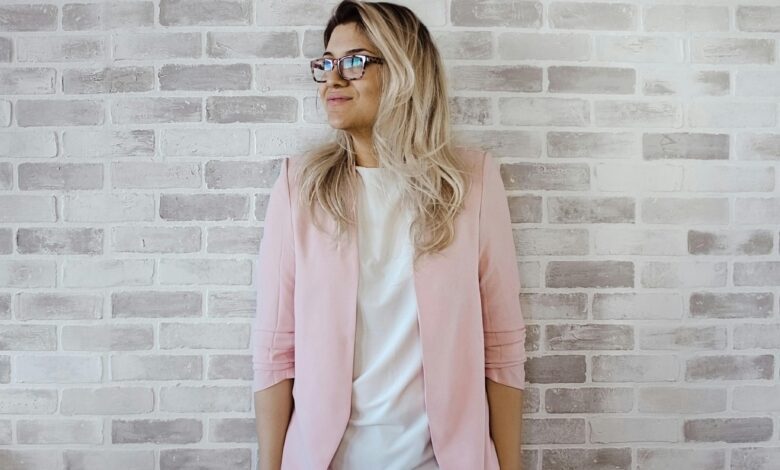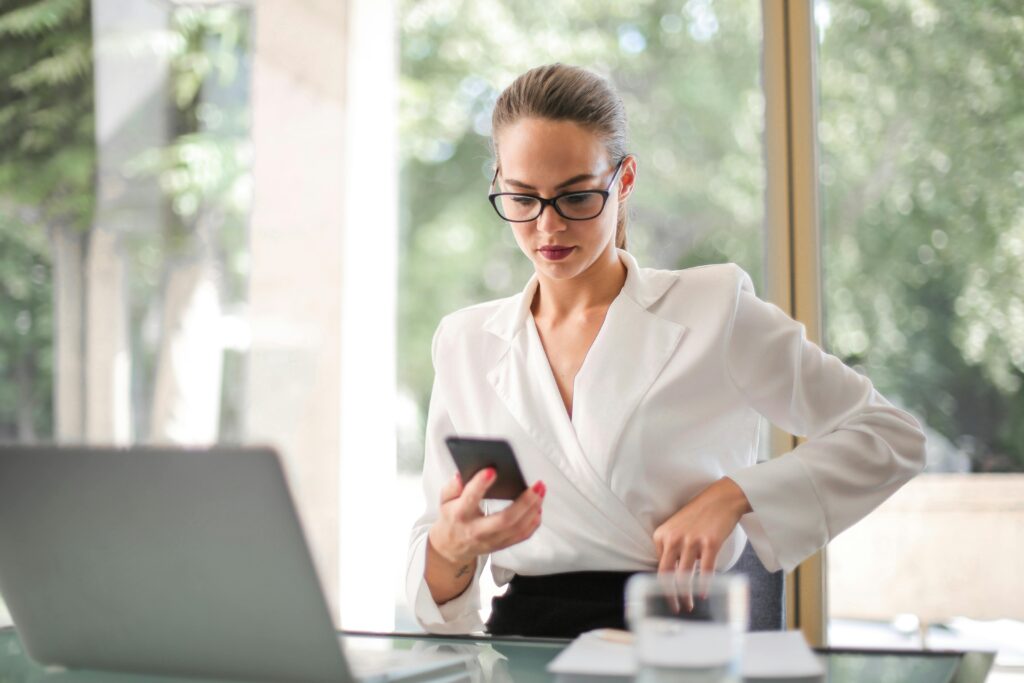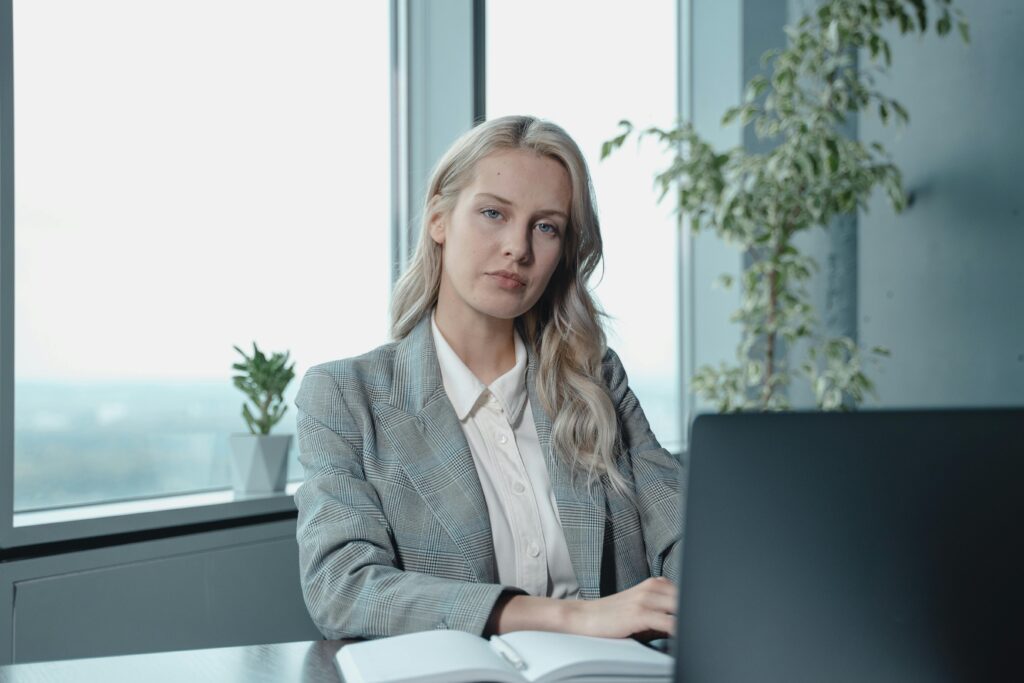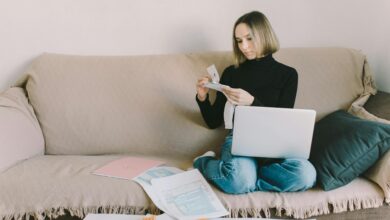Business Casual for Women: 5 Effortless Outfits for the Office

Table of Contents
Introduction to Business Casual for Women
Navigating the realm of business casual can be tricky, especially with varying interpretations across industries. Whether you’re starting a new job, attending a business meeting, or simply want to revamp your work wardrobe, understanding what business casual means for women is essential. This guide will help you create a wardrobe that balances professionalism with personal style, providing you with the confidence to excel in any professional setting. We’ll dive into the evolution of business casual attire, essential pieces for your wardrobe, how to mix and match items, and what to avoid. Let’s get started on your journey to mastering business casual!
Defining Business Casual
What Does Business Casual Mean for Women?
Business casual for women typically includes professional yet relaxed attire. It’s the sweet spot between formal business wear and casual outfits. Think polished but not overly formal – a step down from traditional business wear but more dressed up than everyday casual clothes. Key pieces often include tailored pants, skirts, blouses, and blazers, but the specifics can vary depending on the workplace.
The definition of business casual can vary by company and industry. In some settings, business casual might mean no jeans or sneakers, while in others, it could allow for more flexibility. Generally, business casual attire should be neat, professional, and appropriate for an office environment. It’s about looking put-together and respectful, without needing to wear a full suit.
The Evolution of Business Casual Attire
Over the years, business casual has evolved significantly, influenced by changing workplace cultures and fashion trends. In the past, business casual had strict guidelines, often resembling a watered-down version of traditional business attire. Today, it has become more flexible and inclusive, accommodating various styles and preferences. This evolution reflects a broader cultural shift towards valuing individuality and comfort in the workplace.
The shift towards business casual began in the 1990s as companies started to adopt “Casual Fridays,” allowing employees to dress more comfortably at the end of the workweek. This trend caught on, and soon, the business casual dress code was adopted for every day of the week in many workplaces. The rise of tech companies with more relaxed cultures also influenced this shift, promoting a more casual yet professional look.

Essential Pieces of a Business Casual Wardrobe
Building a business casual wardrobe involves investing in versatile, high-quality pieces that can be mixed and matched to create various outfits. Here are the essential items every woman should consider:
Tops and Blouses
Tops and blouses are the foundation of a business casual wardrobe. Opt for button-down shirts, silk blouses, and knit tops in neutral or muted colors. Patterns are acceptable as long as they are not too bold or distracting. A classic white blouse, for instance, is a versatile piece that can be paired with almost any bottom.
When selecting tops, consider the fabric and fit. Cotton, silk, and blends are excellent choices for their comfort and breathability. Make sure the tops are well-fitted but not too tight, providing a polished look without sacrificing comfort. V-neck and scoop neck styles are often flattering and professional.
Bottoms: Pants, Skirts, and Dresses
Tailored pants, pencil skirts, and knee-length dresses are ideal for a business casual setting. Choose pieces that are well-fitted and made from high-quality materials to ensure a polished look. For pants, consider options like chinos or ankle-length trousers. Skirts should be of an appropriate length, typically just above or below the knee.
Pants can range from slim-fit trousers to wide-leg pants, depending on your preference and body type. Skirts and dresses should allow for ease of movement and be comfortable enough for a full day of wear. Avoid overly tight or revealing options. Midi skirts and A-line dresses are great choices that provide both style and modesty.
Blazers and Jackets
Blazers and jackets add a layer of professionalism to any outfit. They can be paired with dresses, skirts, or pants to elevate your look. Opt for classic cuts in versatile colors like black, navy, or grey. A well-fitted blazer can instantly transform a simple blouse and trousers into a business-ready ensemble.
Look for blazers with a good fit in the shoulders and waist. Single-breasted blazers with a slight tailoring at the waist create a flattering silhouette. Blazers with subtle patterns, like pinstripes, can add interest to your outfit without being too bold. Jackets like cardigans and lightweight coats can also be appropriate for a business casual setting, especially in colder weather.
Footwear: Flats, Heels, and More
Comfortable yet stylish footwear is a must. Ballet flats, loafers, and low to mid-heel pumps are great choices. Avoid overly casual shoes like sneakers unless your workplace allows them. Choose shoes in neutral colors that can easily be paired with multiple outfits. For added comfort, consider investing in cushioned insoles.
Footwear should be professional and polished. Heels should not be too high; kitten heels or block heels are both comfortable and stylish. Loafers and oxfords are excellent choices for a more classic look. Ensure your shoes are clean and in good condition, as scuffed or worn shoes can detract from an otherwise professional outfit.
Accessories: Belts, Jewelry, and Bags
Accessories can enhance your outfit without overwhelming it. Simple jewelry, leather belts, and structured bags are perfect for a business casual look. Keep accessories minimal and tasteful – think stud earrings, delicate necklaces, and classic watches. A structured tote or satchel in a neutral color can complete your outfit while being practical for carrying work essentials.
Belts can help define your waist and add a polished finish to your outfit. Choose belts in leather or fabric that complement your clothing. Jewelry should be understated; avoid large, statement pieces that can be distracting. A classic watch and simple bracelet can add a touch of sophistication. Bags should be large enough to carry your essentials but not too bulky; a structured tote or crossbody bag works well.

Creating a Business Casual Outfit
Mixing and Matching
Building a business casual wardrobe is all about versatility. Invest in pieces that can be easily mixed and matched to create various outfits. This not only saves money but also simplifies getting dressed in the morning. For example, a pair of black trousers can be paired with different blouses and blazers to create multiple looks.
When choosing pieces, think about how they can work together. Neutral colors and classic cuts are easier to mix and match. For example, a navy blazer can be paired with grey trousers or a black skirt. Patterns like stripes or checks can be combined with solid colors for a balanced look. Mixing and matching also allows you to create different outfits from a limited number of pieces, making your wardrobe more sustainable and cost-effective.
Balancing Professional and Stylish
Striking the right balance between professional and stylish is key. Choose clothing that fits well and makes you feel confident, while adhering to your workplace’s dress code. Don’t be afraid to incorporate elements of your personal style, such as a favorite color or pattern, as long as it remains appropriate for the office.
Consider your industry and workplace culture when planning your outfits. In a more conservative environment, stick to classic pieces and neutral colors. In a creative or tech setting, you might have more flexibility to experiment with colors and styles. The goal is to look professional while expressing your personal style. Confidence is key; when you feel good in what you’re wearing, it shows.
Seasonal Considerations
Adapt your business casual wardrobe to the seasons. In warmer months, opt for lighter fabrics like cotton and linen. In colder weather, incorporate layers like cardigans and tights to stay warm while looking professional. Seasonal accessories, such as scarves or boots, can also add a stylish touch to your outfit.
In summer, choose breathable fabrics and lighter colors to stay cool. Dresses and skirts can be great options for warmer weather. In winter, layering is essential; cardigans, blazers, and tights can keep you warm without sacrificing style. Consider investing in a few key pieces for each season, like a wool coat for winter or a lightweight blazer for summer. Accessories like scarves and gloves can add both warmth and style.

Do’s and Don’ts of Business Casual
Common Mistakes to Avoid
Avoid clothing that is too casual, such as denim or overly casual shoes. Steer clear of overly bright colors or bold patterns that can be distracting. Ensure your clothes are clean, ironed, and in good condition. Wearing clothing that is too tight or too loose can also undermine a professional appearance.
Common mistakes include wearing clothes that are too revealing or not appropriate for a professional setting. Ripped jeans, graphic tees, and flip-flops are generally not suitable for business casual. Avoiding these pitfalls can help you maintain a professional appearance. Another mistake is not paying attention to fit; ill-fitting clothes can look sloppy. Always ensure your clothes fit well and are comfortable.
Tips for Staying Professional
Maintain a professional appearance by choosing clothes that fit well and are appropriate for your workplace. When in doubt, it’s better to be slightly overdressed than underdressed. Always prioritize comfort and confidence. If you’re unsure about what constitutes business casual at your workplace, don’t hesitate to ask HR or observe what colleagues are wearing.
Staying professional also means paying attention to grooming and hygiene. Ensure your hair is neat, and your nails are clean and well-maintained. Avoid excessive makeup or fragrances. Professionalism is about the whole package – your clothes, grooming, and behavior all contribute to your overall appearance.
Examples of Business Casual Outfits
Outfit Ideas for Different Industries
Different industries may have varying expectations for business casual attire. For example, creative industries might allow more flexibility with patterns and colors, while corporate settings may prefer a more conservative approach. Here are some examples:
- Corporate: A tailored blazer, blouse, and ankle-length trousers with low-heeled pumps. This outfit is polished and professional, suitable for meetings and presentations.
- Creative: A patterned blouse, midi skirt, and stylish flats. This look allows for more personal expression while remaining appropriate for a professional setting.
- Tech: A knit top, tailored jeans (if allowed), and a cardigan with loafers. Tech environments often have a more relaxed dress code, so this outfit balances comfort and professionalism.
Day-to-Night Transition Pieces
Versatile pieces that transition from day to night can be a great addition to your wardrobe. A simple dress or a blouse with a blazer can easily be dressed up with accessories for an evening event. For instance, swapping flats for heels and adding statement jewelry can transform your look for after-work gatherings.
Consider investing in a few key pieces that can be easily transitioned. A black dress can be dressed up with a blazer and heels for work, then worn with a statement necklace and clutch for a dinner out. A blouse and trousers can be elevated with a pair of stylish earrings and a bold lip color. Versatile pieces save time and allow you to seamlessly transition from professional settings to social events.

Conclusion: Embrace Your Business Casual Style
Embracing business casual style means finding a balance between professionalism and personal expression. With the right pieces, you can create a wardrobe that is both stylish and suitable for your workplace. Remember, confidence is the best accessory you can wear. By understanding the nuances of business casual and incorporating your unique style, you can navigate any professional setting with ease.
Creating a business casual wardrobe is an ongoing process. As you gain experience and understand your workplace culture, you’ll become more adept at choosing outfits that are both professional and reflective of your personal style. Don’t be afraid to experiment and find what works best for you. With the right approach, you can build a wardrobe that supports your professional goals and allows you to express yourself.
FAQs About Business Casual for Women
What is considered business casual for women?
Business casual for women includes tailored pants, skirts, dresses, blouses, and blazers. Footwear should be professional, like flats or low heels. Avoid overly casual items like jeans and sneakers unless specifically allowed by your workplace. Business casual is about finding the balance between formal business wear and everyday casual clothes, ensuring you look polished and professional.
Can jeans be worn in a business casual setting?
While traditional business casual typically excludes jeans, some modern workplaces may allow them if they are dark-washed and free of rips or distressing. Always check your company’s dress code to be sure. If jeans are allowed, pair them with a professional top and blazer to maintain a polished appearance. Dark-washed, well-fitted jeans can look sophisticated and appropriate when styled correctly.
Are open-toed shoes appropriate for business casual?
Open-toed shoes can be acceptable in some business casual environments, particularly in warmer climates. However, it’s safer to opt for closed-toe shoes unless you are certain they are allowed. When in doubt, choose professional-looking footwear that covers your toes. Open-toed shoes should be elegant and well-maintained; avoid overly casual styles like flip-flops or sandals.
How can I make my business casual wardrobe versatile?
Choose neutral colors and classic cuts that can be easily mixed and matched. Invest in quality basics that can be dressed up or down with accessories. Versatile pieces like blazers and cardigans can enhance multiple outfits and provide layering options for different seasons. Think about how each piece can be combined with others to create various looks, and focus on building a capsule wardrobe that meets your professional needs.
What colors are best for business casual attire?
Neutral colors like black, navy, grey, and white are always safe choices for business casual attire. Soft pastels and muted tones can also be appropriate. Avoid overly bright or neon colors unless they are tastefully integrated into your outfit in a subtle way. Neutral colors are versatile and can be easily paired with different pieces, making them ideal for a professional wardrobe.
How do I transition my outfit from day to night?
To transition your outfit from day to night, choose versatile pieces that can be easily dressed up or down. For example, a simple dress can be worn with a blazer and flats during the day, then paired with heels and statement jewelry for the evening. Adding or removing layers and changing accessories can quickly transform your look. Keep a pair of dressier shoes and some jewelry in your bag for quick changes.
What are some budget-friendly tips for building a business casual wardrobe?
Start with a few essential pieces that can be mixed and matched, and gradually build your wardrobe over time. Look for sales and discounts, and consider shopping at thrift stores or online second-hand shops. Investing in quality basics that will last longer is also a good strategy. Focus on building a capsule wardrobe with versatile pieces that can create multiple outfits.
How do I maintain my business casual clothes?
Proper care and maintenance are crucial for keeping your business casual clothes in good condition. Follow the care instructions on the labels, and consider dry cleaning for delicate items. Regularly check for wear and tear, and repair or replace items as needed. Storing your clothes properly, using hangers for blouses and blazers, and folding knitwear can also extend their lifespan.
Can I express my personal style in a business casual environment?
Yes, you can express your personal style within the boundaries of business casual attire. Incorporate elements like favorite colors, patterns, and accessories that reflect your style while maintaining a professional appearance. The key is to balance individuality with professionalism, ensuring that your outfit is appropriate for your workplace. Personal style can shine through subtle details like jewelry, scarves, and shoes.
What should I do if I’m unsure about the dress code?
If you’re unsure about the dress code, observe what your colleagues are wearing or ask your HR department for guidance. It’s better to err on the side of being slightly overdressed than underdressed. Starting with more conservative choices and adjusting as you become familiar with the company culture is a safe approach. Communication and observation are key to understanding and adhering to dress code expectations.
Relevant Websites
Fashion Retailers and Brands:
- Ann Taylor: https://www.anntaylor.com/
- J.Crew: https://www.jcrew.com/
- Zara: https://www.zara.com/us/
- H&M: https://www2.hm.com/en_us/
Style Guides and Blogs:
- Who What Wear: https://www.whowhatwear.com/
- The Zoe Report: https://www.thezoereport.com/
- Harper’s Bazaar: https://www.harpersbazaar.com/
- InStyle: https://www.instyle.com/
- Fashionista: https://fashionista.com/








